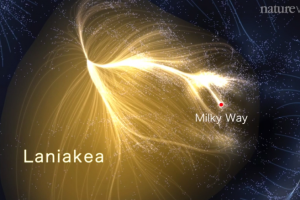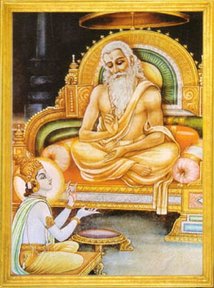Rama: Maharishi Vasishta! Revered Teacher! Kundadanta whom I met on that day is here in this assembly. He has been listening to your instructions for all these days. That is why I have asked you if he has attained Self-Knowledge and if all his doubts have been clarified.
Sage Vasishta: Where is the need for me to say anything? Let us ask him directly.
(Addressing now Kundadanta): What do you say, Kundadanta? Could you understand the essence of Truth? Have you gained Self-Knowledge? Have your doubts been cleared?
Kundadanta: Oh, Greatest of the Sages! Maharishi! My Salutations. Yes, now I am totally free of doubt. I have learnt what all has to be learnt. I understood fully the nature of Consciousness. I realize that even a tiny mustard seed can contain infinite universes within it. I could also understand experientially that there are no worlds at all from an Absolute point of view. I can see clearly that a question on how a large earth can fit into a small room has no locus.
What every creature experiences in the world is only The Supreme Brahman. The ignorance they experience is also Brahman. There is nothing whatsoever anywhere anytime beyond Supreme Brahman. That is the last word!
Vasishta: He is a Great Man Indeed! Congratulations to you, Kundadanta! Continue reading


